HSBC 2005 Annual Report Download - page 176
Download and view the complete annual report
Please find page 176 of the 2005 HSBC annual report below. You can navigate through the pages in the report by either clicking on the pages listed below, or by using the keyword search tool below to find specific information within the annual report.-
 1
1 -
 2
2 -
 3
3 -
 4
4 -
 5
5 -
 6
6 -
 7
7 -
 8
8 -
 9
9 -
 10
10 -
 11
11 -
 12
12 -
 13
13 -
 14
14 -
 15
15 -
 16
16 -
 17
17 -
 18
18 -
 19
19 -
 20
20 -
 21
21 -
 22
22 -
 23
23 -
 24
24 -
 25
25 -
 26
26 -
 27
27 -
 28
28 -
 29
29 -
 30
30 -
 31
31 -
 32
32 -
 33
33 -
 34
34 -
 35
35 -
 36
36 -
 37
37 -
 38
38 -
 39
39 -
 40
40 -
 41
41 -
 42
42 -
 43
43 -
 44
44 -
 45
45 -
 46
46 -
 47
47 -
 48
48 -
 49
49 -
 50
50 -
 51
51 -
 52
52 -
 53
53 -
 54
54 -
 55
55 -
 56
56 -
 57
57 -
 58
58 -
 59
59 -
 60
60 -
 61
61 -
 62
62 -
 63
63 -
 64
64 -
 65
65 -
 66
66 -
 67
67 -
 68
68 -
 69
69 -
 70
70 -
 71
71 -
 72
72 -
 73
73 -
 74
74 -
 75
75 -
 76
76 -
 77
77 -
 78
78 -
 79
79 -
 80
80 -
 81
81 -
 82
82 -
 83
83 -
 84
84 -
 85
85 -
 86
86 -
 87
87 -
 88
88 -
 89
89 -
 90
90 -
 91
91 -
 92
92 -
 93
93 -
 94
94 -
 95
95 -
 96
96 -
 97
97 -
 98
98 -
 99
99 -
 100
100 -
 101
101 -
 102
102 -
 103
103 -
 104
104 -
 105
105 -
 106
106 -
 107
107 -
 108
108 -
 109
109 -
 110
110 -
 111
111 -
 112
112 -
 113
113 -
 114
114 -
 115
115 -
 116
116 -
 117
117 -
 118
118 -
 119
119 -
 120
120 -
 121
121 -
 122
122 -
 123
123 -
 124
124 -
 125
125 -
 126
126 -
 127
127 -
 128
128 -
 129
129 -
 130
130 -
 131
131 -
 132
132 -
 133
133 -
 134
134 -
 135
135 -
 136
136 -
 137
137 -
 138
138 -
 139
139 -
 140
140 -
 141
141 -
 142
142 -
 143
143 -
 144
144 -
 145
145 -
 146
146 -
 147
147 -
 148
148 -
 149
149 -
 150
150 -
 151
151 -
 152
152 -
 153
153 -
 154
154 -
 155
155 -
 156
156 -
 157
157 -
 158
158 -
 159
159 -
 160
160 -
 161
161 -
 162
162 -
 163
163 -
 164
164 -
 165
165 -
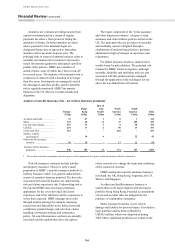 166
166 -
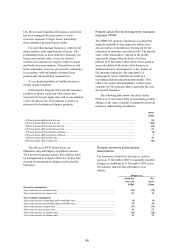 167
167 -
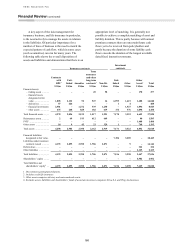 168
168 -
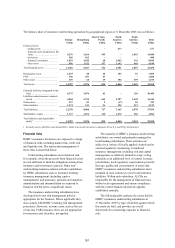 169
169 -
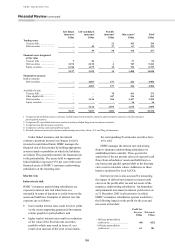 170
170 -
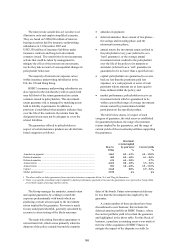 171
171 -
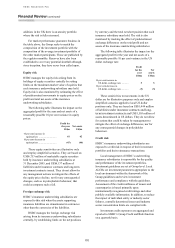 172
172 -
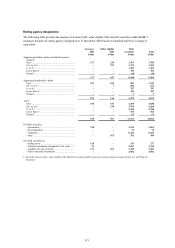 173
173 -
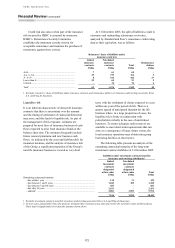 174
174 -
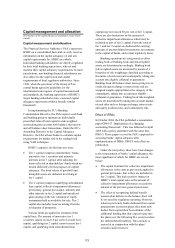 175
175 -
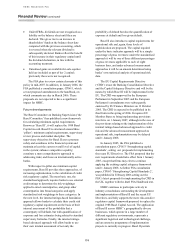 176
176 -
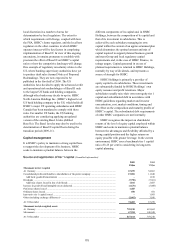 177
177 -
 178
178 -
 179
179 -
 180
180 -
 181
181 -
 182
182 -
 183
183 -
 184
184 -
 185
185 -
 186
186 -
 187
187 -
 188
188 -
 189
189 -
 190
190 -
 191
191 -
 192
192 -
 193
193 -
 194
194 -
 195
195 -
 196
196 -
 197
197 -
 198
198 -
 199
199 -
 200
200 -
 201
201 -
 202
202 -
 203
203 -
 204
204 -
 205
205 -
 206
206 -
 207
207 -
 208
208 -
 209
209 -
 210
210 -
 211
211 -
 212
212 -
 213
213 -
 214
214 -
 215
215 -
 216
216 -
 217
217 -
 218
218 -
 219
219 -
 220
220 -
 221
221 -
 222
222 -
 223
223 -
 224
224 -
 225
225 -
 226
226 -
 227
227 -
 228
228 -
 229
229 -
 230
230 -
 231
231 -
 232
232 -
 233
233 -
 234
234 -
 235
235 -
 236
236 -
 237
237 -
 238
238 -
 239
239 -
 240
240 -
 241
241 -
 242
242 -
 243
243 -
 244
244 -
 245
245 -
 246
246 -
 247
247 -
 248
248 -
 249
249 -
 250
250 -
 251
251 -
 252
252 -
 253
253 -
 254
254 -
 255
255 -
 256
256 -
 257
257 -
 258
258 -
 259
259 -
 260
260 -
 261
261 -
 262
262 -
 263
263 -
 264
264 -
 265
265 -
 266
266 -
 267
267 -
 268
268 -
 269
269 -
 270
270 -
 271
271 -
 272
272 -
 273
273 -
 274
274 -
 275
275 -
 276
276 -
 277
277 -
 278
278 -
 279
279 -
 280
280 -
 281
281 -
 282
282 -
 283
283 -
 284
284 -
 285
285 -
 286
286 -
 287
287 -
 288
288 -
 289
289 -
 290
290 -
 291
291 -
 292
292 -
 293
293 -
 294
294 -
 295
295 -
 296
296 -
 297
297 -
 298
298 -
 299
299 -
 300
300 -
 301
301 -
 302
302 -
 303
303 -
 304
304 -
 305
305 -
 306
306 -
 307
307 -
 308
308 -
 309
309 -
 310
310 -
 311
311 -
 312
312 -
 313
313 -
 314
314 -
 315
315 -
 316
316 -
 317
317 -
 318
318 -
 319
319 -
 320
320 -
 321
321 -
 322
322 -
 323
323 -
 324
324 -
 325
325 -
 326
326 -
 327
327 -
 328
328 -
 329
329 -
 330
330 -
 331
331 -
 332
332 -
 333
333 -
 334
334 -
 335
335 -
 336
336 -
 337
337 -
 338
338 -
 339
339 -
 340
340 -
 341
341 -
 342
342 -
 343
343 -
 344
344 -
 345
345 -
 346
346 -
 347
347 -
 348
348 -
 349
349 -
 350
350 -
 351
351 -
 352
352 -
 353
353 -
 354
354 -
 355
355 -
 356
356 -
 357
357 -
 358
358 -
 359
359 -
 360
360 -
 361
361 -
 362
362 -
 363
363 -
 364
364 -
 365
365 -
 366
366 -
 367
367 -
 368
368 -
 369
369 -
 370
370 -
 371
371 -
 372
372 -
 373
373 -
 374
374 -
 375
375 -
 376
376 -
 377
377 -
 378
378 -
 379
379 -
 380
380 -
 381
381 -
 382
382 -
 383
383 -
 384
384 -
 385
385 -
 386
386 -
 387
387 -
 388
388 -
 389
389 -
 390
390 -
 391
391 -
 392
392 -
 393
393 -
 394
394 -
 395
395 -
 396
396 -
 397
397 -
 398
398 -
 399
399 -
 400
400 -
 401
401 -
 402
402 -
 403
403 -
 404
404 -
 405
405 -
 406
406 -
 407
407 -
 408
408 -
 409
409 -
 410
410 -
 411
411 -
 412
412 -
 413
413 -
 414
414 -
 415
415 -
 416
416 -
 417
417 -
 418
418 -
 419
419 -
 420
420 -
 421
421 -
 422
422 -
 423
423 -
 424
424
 |
 |

HSBC HOLDINGS PLC
Financial Review (continued)
174
• Under IFRSs, dividends are not recognised as a
liability on the balance sheet until they are
declared. This gives rise to an increase in
shareholders’ funds at the balance sheet date
compared with the previous accounting, which
is reversed when the relevant dividend is
subsequently declared. Banks reflect the benefit
of this increase in their regulatory capital until
the dividend declaration, in line with the
accounting treatment.
• Unrealised gains on available-for-sale equities
held are included as part of tier 2 capital;
previously these were not recognised.
The FSA plan to review certain elements of this
policy in mid-2007. In addition, in January 2006, the
FSA published a consultation paper, CP06/1, which
set out proposed amendments to the handbook, on
which comments are due in March 2006. These
proposals are not expected to have a significant
impact for HSBC.
Future developments
The Basel Committee on Banking Supervision (‘the
Basel Committee’) has published a new framework
for calculating minimum capital requirements.
Known as ‘Basel II’, it will replace the 1988 Basel
Capital Accord. Basel II is structured around three
‘pillars’: minimum capital requirements, supervisory
review process and market discipline. The
supervisory objectives for Basel II are to promote
safety and soundness in the financial system and
maintain at least the current overall level of capital
in the system; enhance competitive equality;
constitute a more comprehensive approach to
addressing risks; and focus on internationally active
banks.
With respect to pillar one minimum capital
requirements, Basel II provides three approaches, of
increasing sophistication, to the calculation of credit
risk regulatory capital. The most basic one, the
standardised approach, requires banks to use external
credit ratings to determine the risk weightings
applied to rated counterparties, and group other
counterparties into broad categories and apply
standardised risk weightings to these categories. In
the next level, the internal ratings-based foundation
approach allows banks to calculate their credit risk
regulatory capital requirement on the basis of their
internal assessment of the probability that a
counterparty will default, but with quantification of
exposure and loss estimates being subject to standard
supervisory formulae. Finally, the internal ratings-
based advanced approach will allow banks to use
their own internal assessment of not only the
probability of default but also the quantification of
exposure at default and loss given default.
Basel II also introduces capital requirements for
operational risk and, again, three levels of
sophistication are proposed. The capital required
under the basic indicator approach will be a simple
percentage of gross revenues: under the standardised
approach it will be one of three different percentages
of gross revenues applicable to each of eight
business lines, and under advanced measurement
approaches it will be an amount determined using
banks’ own statistical analysis of operational risk
data.
The EU Capital Requirements Directive
(‘CRD’) recast the Banking Consolidation Directive
and the Capital Adequacy Directive and will be the
means by which Basel II will be implemented in the
EU. The CRD was approved by the European
Parliament in September 2005 and the European
Parliament’s amendments were subsequently
endorsed by EU Finance Ministers on 12 October
2005. The CRD is expected to be published in its
final form in the spring of 2006. It requires EU
Member States to bring implementing provisions
into force on 1 January 2007, although in the case of
the provisions relating to the implementation of the
internal ratings-based advanced approach to credit
risk and the advanced measurement approach to
operational risk, implementation may be delayed
until 1 January 2008.
In January 2005, the FSA published a
consultation paper, CP05/3 ‘Strengthening capital
standards’, setting out proposals for implementing
the recast EU Directives. The FSA proposed that the
new requirements should take effect from 1 January
2007, except that firms may elect to continue
applying the existing capital adequacy framework
until 1 January 2008. A further FSA consultation
paper, CP06/3 ‘Strengthening Capital Standards 2’,
was published in February 2006 setting out the
FSA’s latest proposals for implementing the CRD in
the UK, together with the draft FSA Handbook text.
HSBC continues to participate actively in
industry consultations surrounding the development
and implementation of Basel II and the recast EU
Directives, and fully supports the more risk-sensitive
regulatory capital framework proposed to replace the
original 1988 Basel Capital Accord. The application
of Basel II across HSBC’s geographically diverse
businesses, which operate in a large number of
different regulatory environments, represents a
significant logistical and technological challenge,
and an extensive programme of implementation
projects is currently in progress. Basel II permits
